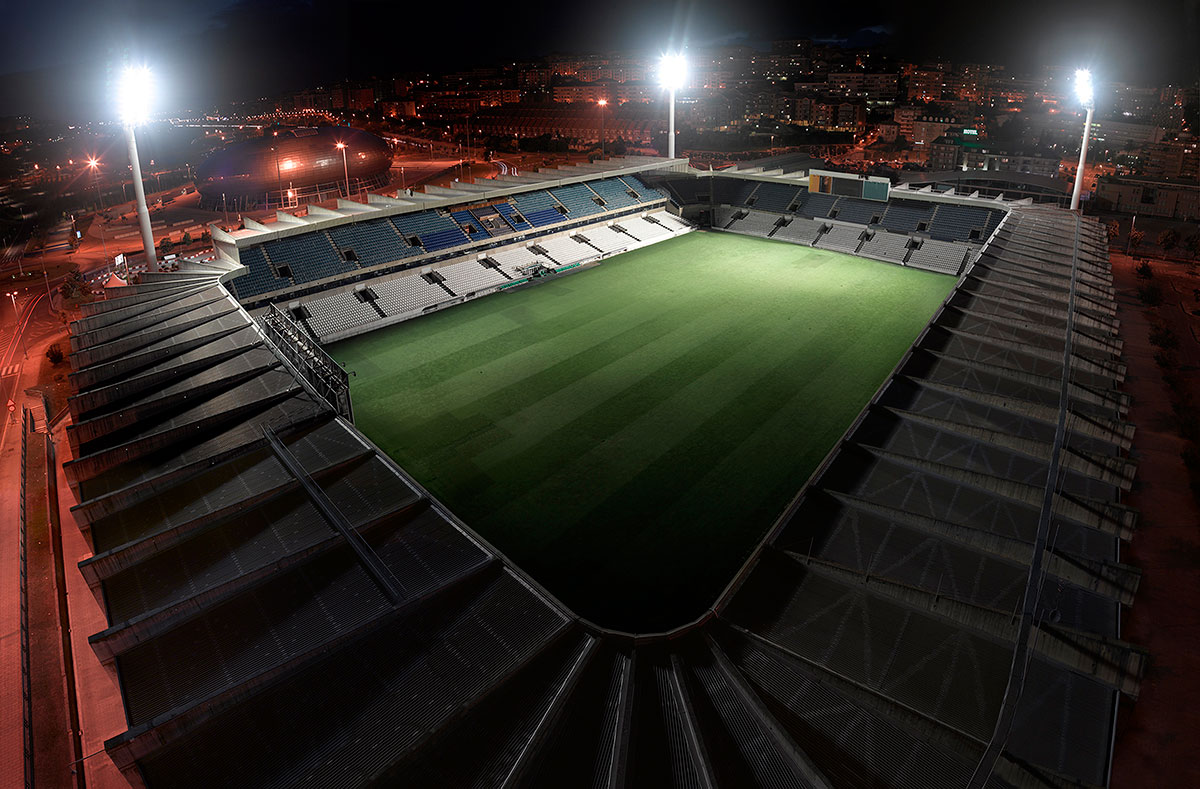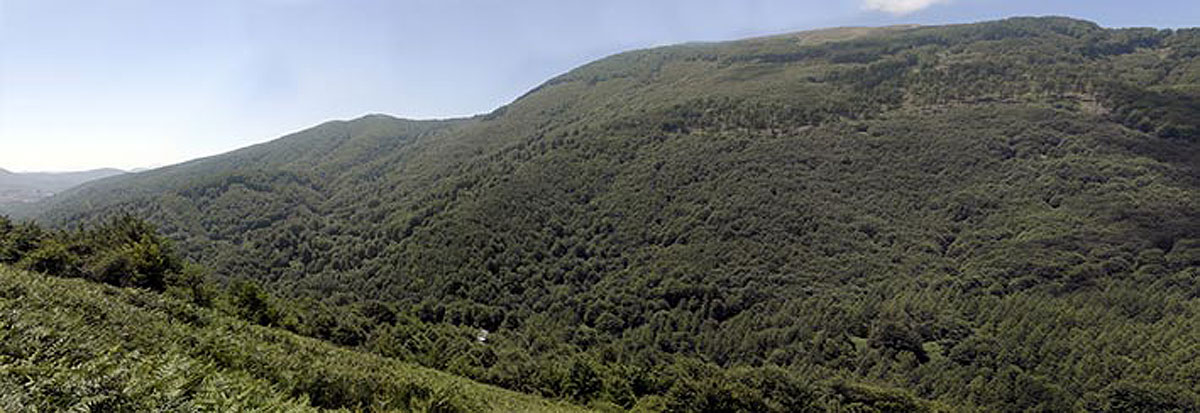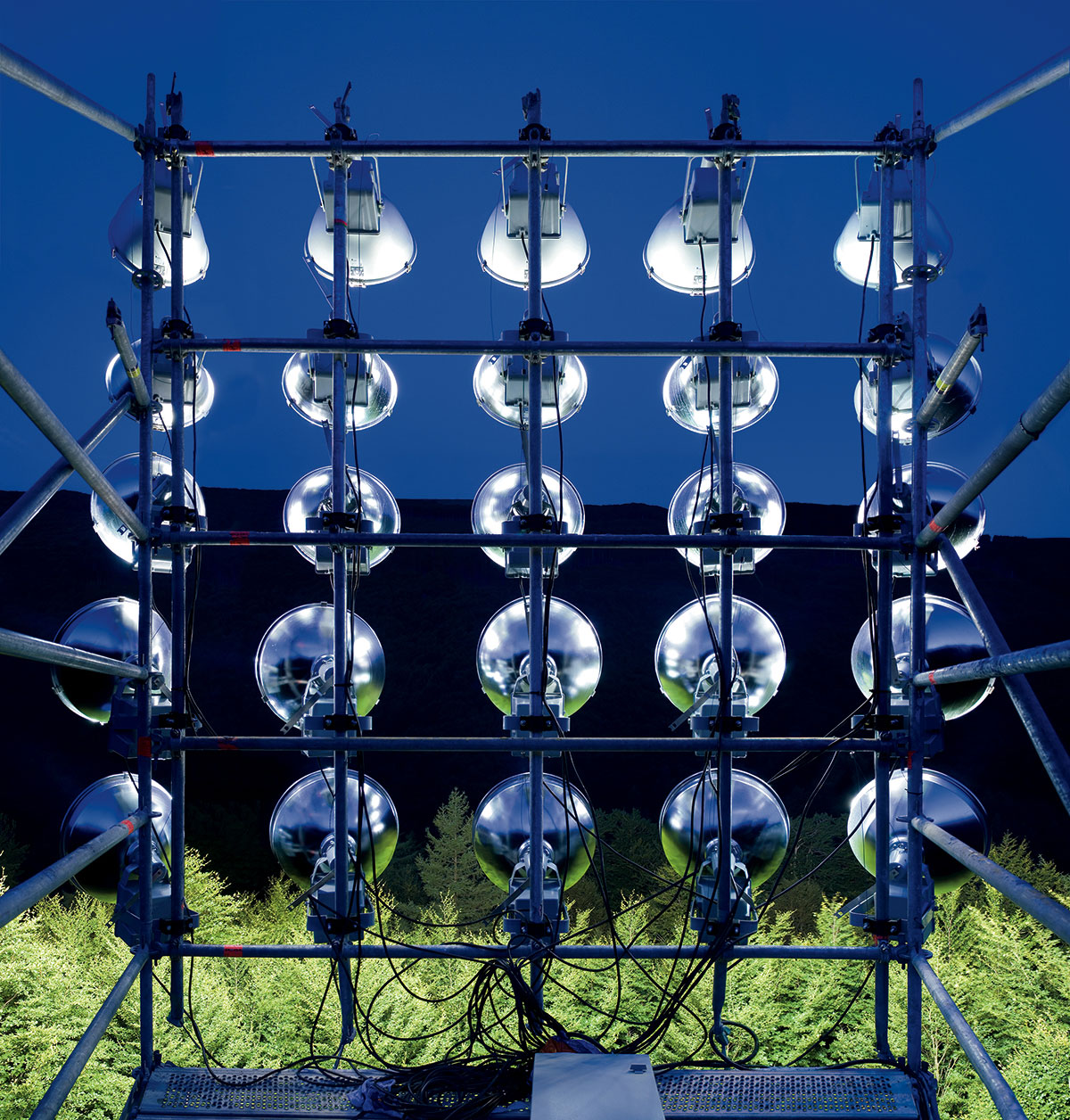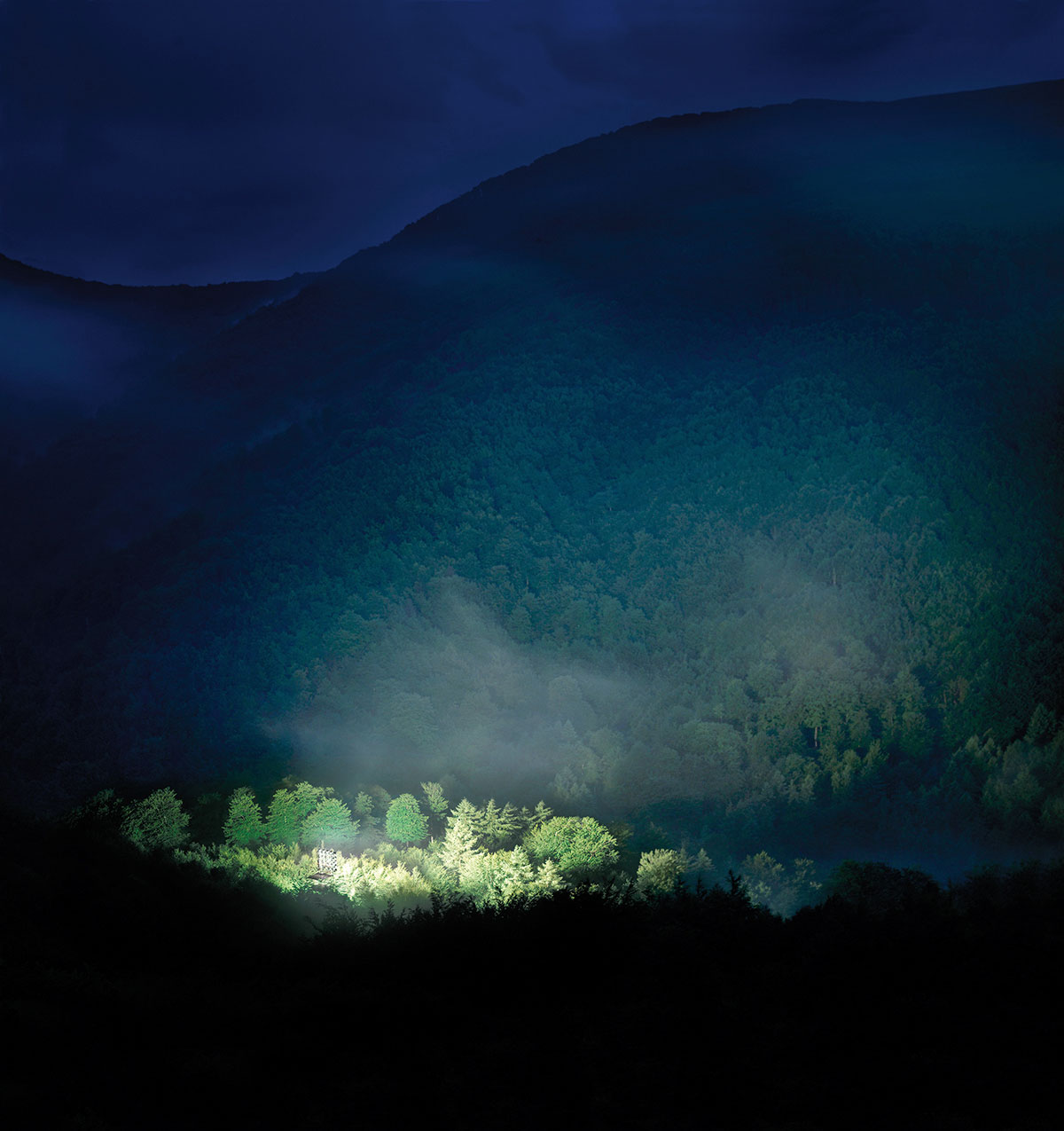twilight
Lat: 43° 28’ 33.1026” Long: 3° 47’ 32.2044”
Lat: 43° 5’ 57.2202” Long: 1° 31’ 12.8382”
Twilight consists of the displacing of a floodlighting tower for a football pitch, a space that is hyperdefined by and for spectacle, whose descriptive lighting presents the subject of its attention as the only one that exists. This tower has been transferred to one of Europe’s last forests, Irati, in the North of Navarre, creating as a replica a redefinition of the real as visible employing the language proper to spectacle.
The project deals with the way in which western culture builds reality through light. Natural lighting provides a consistent space-time dimension, while the west’s approach to light, in contrast, goes beyond the manufacture of an eternal day to rupture structures and cycles towards the construction of an abstract medium that loses all relations except in relation to itself. Fire as the first artifice and, later, artificial light have symbolised the place of transformation. Spectacle has inherited the place and hypnotic qualities of fire and has marked out the plane of the visible so that it can be digested, transferring attention towards a series of pseudo-events.
Representation of place is now insufficient. The project poses this installation as the need for the real beyond its image. The last place is the place itself.
Irati 2009
Lat: 43° 28’ 33.1026” Long: 3° 47’ 32.2044”
Lat: 43° 5’ 57.2202” Long: 1° 31’ 12.8382”
Twilight consiste en el desplazamiento de una torre de iluminación de un campo de fútbol, un espacio hiperdefinido por y para el espectáculo, cuya iluminación descriptiva presenta el sujeto de su atención como el único existente. Esta torre se ha trasladado a una de las ultimas selvas de Europa, la de Irati en el Norte de Navarra creando como réplica una redefinición de lo real en tanto que visible mediante el propio lenguaje del espectáculo
El proyecto trata el modo en que occidente construye un circuito de lo real a través de la luz. La iluminación natural proporciona una dimensión consecuente del espacio-tiempo, sin embargo el planteamiento lumínico de occidente practica una ruptura de estructuras y ciclos hacia la construcción de un medio abstracto que pierde toda relación excepto para consigo mismo. El fuego como primer artificio y más tarde la luz artificial han simbolizado el lugar de la transformación. El espectáculo ha heredado el lugar y las cualidades hipnóticas del fuego y acotado el plano de lo visible para su digestión, trasladando la atención hacia una serie de pseudoacontecimientos.
La representación del lugar es ya insuficiente. El proyecto plantea esta instalación como necesidad de lo real más allá de su imagen. El lugar último es el lugar mismo.
Irati 2009
















